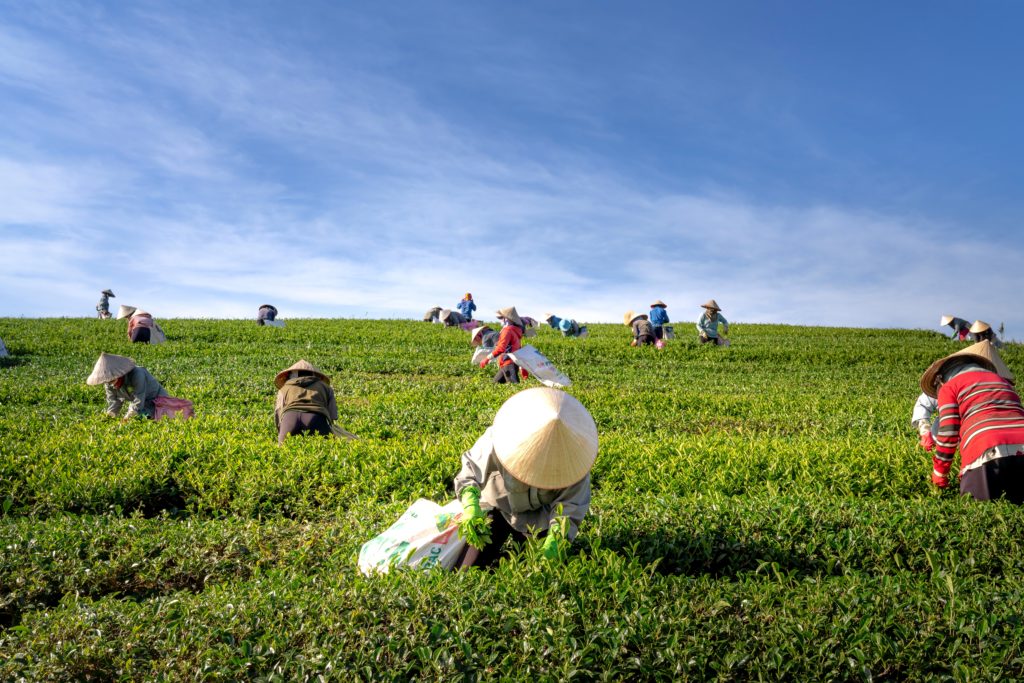We have been thinking about this topic for a while now and wanted to share our thoughts on what it has been like working through a pandemic, coupled with other recent unprecedented events, in the food and distribution industry. We are sure that you have noticed a few of your favourite items constantly being out of stock, increased in price or being stockpiled on your routine visit to the grocery store. You may have even stopped and asked the grocery store cashier, your partner, a friend, your sibling, or your parents, “Why is this happening?”
To bring everyone up to speed, at this moment in time more than 221 million people have recovered from COVID-19 and there have been over 6.9 billion vaccine doses administered globally. The pandemic is definitely a global health crisis that has significant impacts on all of our lives. Not just on how we live day to day but also on the world economy as a whole due to the necessary measures put into place to contain the spread of this disease.
Food Supply and COVID-19, how are They Even Related?
We are all absolutely amazed at how global food distribution has held up relatively well these past two years and have to give a huge shout-out to all the warehouse workers, drivers, and everyone else working across the supply chain distribution network. In many countries, the measures put in place to contain the spread of the virus have disrupted the supply of agro-food products to markets and consumers, both within and across borders. Our industry is experiencing a substantial shift in composition and – for some commodities – an unprecedented level of demand or more famously known as “where did all the toilet paper go” syndrome.
While it seems that it may no longer be the case, the virus still does pose a threat to food sovereignty and food security. This affects the livelihoods of those working in our industry, as countries that have labour-intensive agricultural production systems generally have a lesser capacity to withstand a severe macroeconomic shock.
Recent incidents around the world have not helped the situation either, some of those key events are highlighted below:
- On-going farmer protests and farming regulatory changes that are currently taking place in India have resulted in creating major hurdles while sourcing local products.
- Various negative environmental impacts in rural parts of Thailand have disrupted yields and produce thus causing shortages.
- An explosive number of COVID-19 cases all across Vietnam have resulted in strict lockdowns with the army having to work on the farms so as to make sure the harvests do not go to waste.
- We are experiencing huge fluctuations in oil prices that are at near multi-year highs. The market is experiencing a supply deficit, which is driving prices to rise further.
- The meme of the year event was when a cargo ship was stuck in the Suez Canal for days resulting in a stall of over $10 billion dollars’ worth of cargo a day. Which also caused a domino effect as other cargo ships that were diverted as a result ended up extremely delayed and or with expired products.
- The average shipping cost of a 40-foot container today has more than tripled from what it was a year ago. We were used to seeing prices anywhere between $2,000 – $5000 and now spot bookings can range anywhere between $8,000 – $17,000 dollars.
The above events have contributed in some way or form to the troubles we are all experiencing today at grocery stores with increased prices for certain commodities, delays in shipments and lack of product availability.

We wanted to throw some more light on these contributing factors as they are proving to be critical:
- India: The agricultural sector in India has been going through quite some turmoil this past year. Right from major farmer protests all across the country on new policies and bills that the government is trying to push through, to the recent regulatory changes such as the new requirements for organic products imported from India all seems to be having a large impact on product availability. Starting from July 2021, all current organic operations in India will have to submit an application to a USDA-accredited organic certifier in order to continue exporting to the US markets.
- Vietnam: The country is in the midst of the most intense wave of the pandemic which has resulted in a complete halt of all food exports. Seafood production has been cut in half and may drop another 30% before the end of the year. Exports of vegetables as well are expected to drop 30% in the last quarter of the year. The biggest problem is that Vietnam, which has had trouble getting its citizens vaccinated (less than 1% of the population is fully vaccinated, according to Bloomberg) – has had to resort to severe lockdown measures in the southern region, where most of its food is produced, to curb the spread of the virus.
- Container Crisis: Each country is facing its own unique set of challenges while dealing with the pandemic. This is also impacting global freight movement, container availability, and vessel scheduling. Networks of cargo ships, trains, and trucks are buckling under ongoing stress. Facility closures and reduced labour at farms, factories, and warehouses are all contributing to shortages of everything from dry food ingredients and cooking oil to plastic, glass, and aluminum packaging.
So why have all the containers suddenly vanished? A significant number of containers have found themselves in inland depots. Others have stacked up at ports as they were not sent back due to International COVID-19 restrictions to continue the trade partnership. The pairing of lockdown regulations alongside other factors, such as a staff deficit, meant a backlog of containers developed over time and is now causing unprecedented delays.
- Labour-Shortage: Limits on the mobility of people across borders and on-going national lockdown restrictions are contributing to labour shortages in almost all sectors around the world. The ones that have been impacted the most however, are those areas that are characterized by periods of peak seasonal labour demand or labour-intensive production.
This has resulted in what many have dubbed as “The Great Resignation” where by millions of workers have decided to quit the workforce and not return back to work. Dr. Laura Hamill, chief science advisor at Limeade (an employee well-being software company), said “The mass exodus workplaces have experienced over the past several months is unprecedented—burnout levels reached an all-time high. There was a societal breakdown when it came to the ecosystem of work, home and well-being. People have reached their limits.”
- The Agricultural Commodity Price Index (107.67) remained near its highest level that we have seen in a long time. As of September 2021, it is approximately 20% higher than what it was back in September 2020 (88.31). Prices for commodities like maize, wheat, and rice are about 43%, 12% and 10% respectively above their January 2020 levels.

We recognize that the pandemic poses some serious challenges for all of us in the short term. However, COVID-19 has also proven to be a catalyst to accelerate certain transformations in our industry as well. The reason for this optimism comes from a few facts:
- Most countries have designated the agriculture and agro-food sector as essential and therefore exempt from business closures and restrictions on movement.
- The supplies of staple crops are large, production prospects are favourable, and cereal stocks are expected to reach their third highest level on record.
- Many industry experts on food development and distribution believe that enough food is available globally, but COVID-19 is disrupting supply and demand in many complex ways. This realization has prompted businesses to build secondary sourcing and back-up supply partnerships to better manage the flow of goods around the world.
- In India, women’s self-help groups co-financed by the World Bank were mobilized to help run community kitchens, restore fresh food supplies, spread awareness about healthy food and nutrition and help with providing sanitizers in rural areas.
- Foraging, which was once a part of everyone’s life had slowly faded away and been replaced by regular trips to the supermarket. Until recently, where there has been a huge revival in the interest for searching and consuming wildly grown plants and fruits. Countries like Albania and Kosovo have been very well known for their sporadic nesting grounds and traditional foraging practises due to their Mediterranean climate and land that has little to almost no chemical contamination. Tourists and locals for decades have been shifting through the mountains to find wild elderflowers, cowslips, ironwort, bilberries, sour apples, nettle leaves, boletus mushrooms, walnuts and so much more.

Westpoint is excited for what the future of our industry will behold. The eagerness to know more about how our products are sourced has helped fuel the excitement to share the stories of the heroes of our industry, the farmers and women entrepreneurs who are responsible for all that we eat and enjoy. While it has definitely been hectic and challenging at times to deal with the surges in demand and shortages in supply, we aim to continue working as hard as we can to try and have local food businesses stocked up as much as possible.
CONNECT WITH US!
You can share some of your feedback and thoughts on how the present situation has affected the way you buy your daily groceries with us on Facebook, Instagram, or Pinterest, and we will try and feature them in our next blog post!